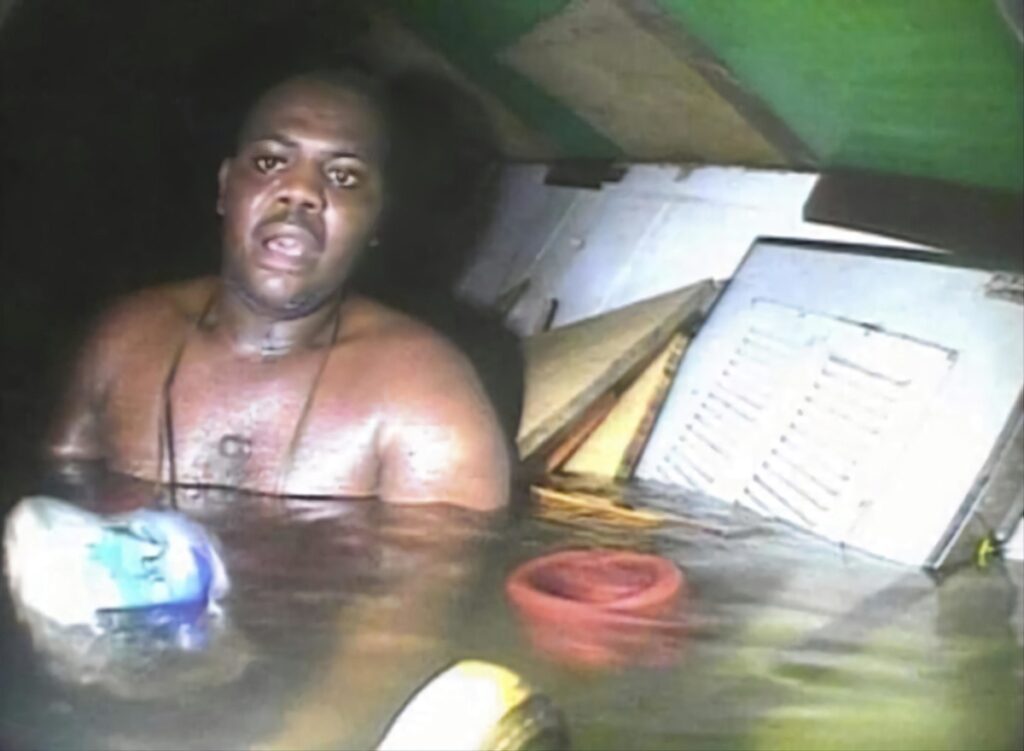
Few survival stories can match the astonishing saga of Harrison Okene, a ship’s cook whose unimaginable endurance saw him spending an astounding 60 hours trapped in a sunken vessel at the ocean’s murky depths. Okene’s harrowing experience began in 2013, transforming him into an accidental aquanaut and showcasing the indomitable human spirit.
Okene’s ordeal unfolded while he was working on the Jascon-4, a tugboat aiding an oil tanker off the Nigerian coast. On the fateful morning of May 26, a freak wave capsized the boat, turning it upside down. Okene found himself in the bathroom, thrown to the floor with a head injury from the impact. As water rushed in, he realized the boat was sinking, sealing the fate of the majority of the crew due to safety protocols that confined them to their cabins amid piracy threats.
In a desperate bid for survival, Okene maneuvered into the engineers’ office, discovering a small air pocket as the boat settled upside down on the seabed, 100 feet below the ocean’s surface. Alone, in darkness, clad only in boxers, and with no provisions, Okene faced an abyss of dangers. Sharks and other marine life feasted on the corpses of his comrades, while the cold water crept up his body.

Prayer became Okene’s refuge as he recited Psalm 54, clinging to faith in the midst of the darkness. He attempted to navigate the sunken ship using a rope, but solitude and the harsh underwater environment presented constant threats. Carbon dioxide poisoning, dehydration, hypothermia, and the looming danger of decompression sickness haunted Okene during his 60-hour ordeal.
On May 28, a glimmer of hope appeared in the form of a diver investigating the wreck. Okene reached out, touching the diver’s arm, shocking and frightening him. The subsequent rescue involved providing Okene with a diving helmet, guiding him to a diving bell for normal breathing. However, the danger persisted as he had been exposed to high pressure for an extended period.
The remarkable video of the rescue operation by DCN Diving captures the intensity and triumph of Okene’s survival.
After enduring only minor injuries and psychological trauma, Okene attributed his survival to divine intervention. He believed he was saved for a purpose and expressed continued love for the sea, even aspiring to become a diver himself.
Scientifically, Okene’s survival hinged on a small air pocket, estimated at about 4 feet high, which contained pressurized air compressed by the ocean floor pressure. Physicist Maxim Umansky suggested that the pocket sustained Okene for about 60 hours, factoring in the compressed air. Okene inadvertently mitigated the risk of lethal carbon dioxide buildup by increasing the water’s surface area within the air pocket, preventing it from reaching deadly levels.
To counter hypothermia, Okene ingeniously crafted a makeshift platform using a mattress, keeping himself slightly elevated above the water surface. This prevented rapid body temperature loss in the icy ocean water.
In an unexpected turn of events, Okene became an accidental ‘aquanaut.’ The extreme depth of the sunken vessel elevated nitrogen levels in his blood to a potentially life-threatening extent. Spending three days in a decompression chamber became crucial to adjusting his body to normal pressure and avoiding the bends.

Emerging from the decompression unit, Okene, initially unaware of the time spent underwater, was met with the starry sky. Astonishingly, he overcame his fear of the sea, fulfilling his promise made during the survival interview. In 2015, he became a certified commercial diver, with the diver who rescued him presenting him with his diving diploma.
Harrison Okene’s extraordinary survival narrative stands as one of the most remarkable stories of human resilience, courage, and faith. It serves as a testament to the unpredictable and unforgiving nature of the sea, urging us never to take life for granted.

Leave a Reply